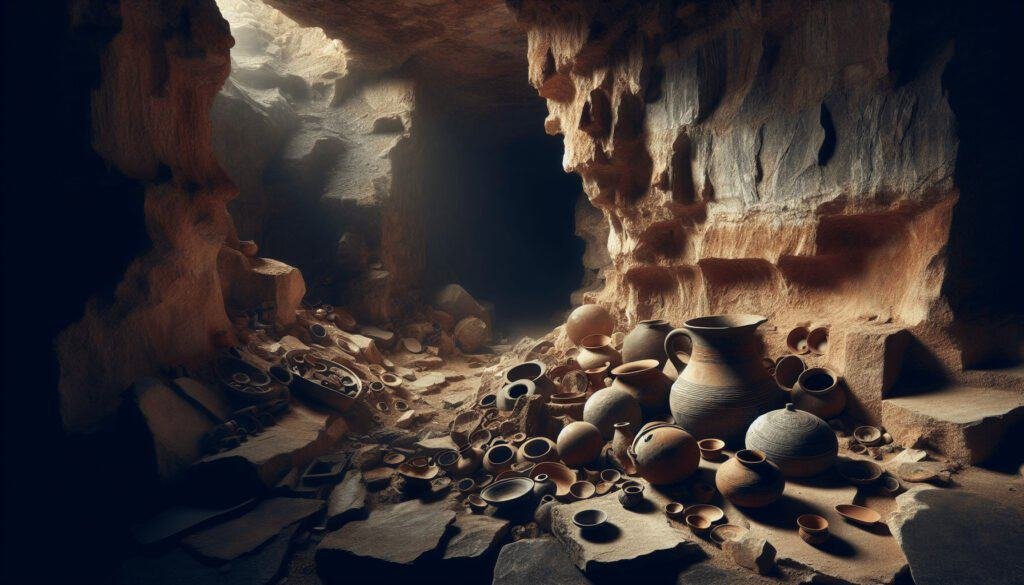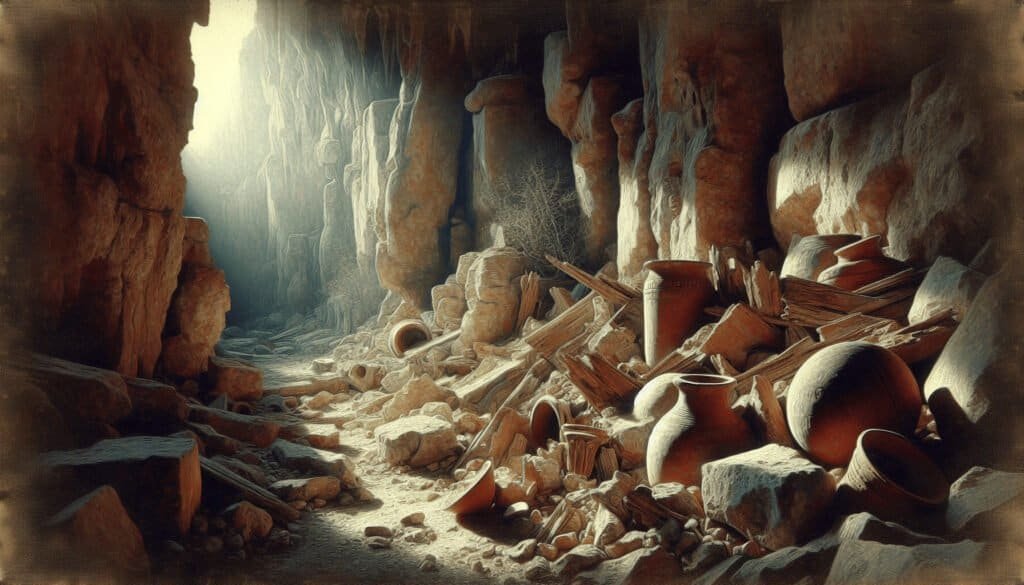Have you ever stopped to wonder what secrets lie beneath the surface of the earth, tucked away in places long forgotten? Picture yourself in a dimly lit cave, surrounded by the echoes of ancient times. One can’t help but feel a connection to the past, especially when contemplating the debris left behind by those who came before us. The study of storage cave debris provides a fascinating glance into ancient societies and their ways of life, revealing not just their daily activities but something deeper—a struggle against conformity that resonates through the ages.

Understanding Storage Cave Debris
When we talk about storage cave debris, what exactly do we mean? This term refers to the remnants found in caves that were once used for storing goods, tools, or even religious items. Usually, these caves served as a refuge for communities that had to adapt to their environment, much like you might rearrange your living space to accommodate a new circumstance.
Historical Significance
The historical significance of these caves cannot be understated. They serve as time capsules, preserving bits of culture, lifestyle, and even struggles against conformity. They are not merely dusty relics; they are windows into the lives of those who lived thousands of years ago. Each artifact can tell a story—if only we take the time to listen.
Types of Artifacts Found
In storage caves, you might find a variety of artifacts:
- Food Remains: Piles of seeds, grains, or preserved meats can indicate what was consumed by past inhabitants.
- Tools: Objects such as knives, pots, and weaving implements could reveal technological advancements.
- Religious Symbols: Figurines and remnants of rituals can show how spirituality shaped daily lives.
These artifacts help build a clearer picture, not just of what these societies did, but how they perceived their world.
The Theological Context: Ancient and Modern Perspectives
What does this storage cave debris have to do with theology? Quite a bit, actually. The items found in these caves can reflect the spiritual beliefs of their owners, akin to how you might choose decor for your home that reflects your personal beliefs.
Reflections of Belief Systems
Storage caves were often more than just places to hide items; they were sanctuaries. Many ancient people saw caves as sacred spaces, connecting them to the divine. Religious artifacts found in caves have often spurred discussions among theologians and archaeologists alike.
- Example from the Dead Sea Scrolls: Discovered in 1947, these ancient texts were hidden in the Qumran caves, believed to be a repository of Jewish spirituality. They give insight into the beliefs that shaped Judaism during a tumultuous period in history.
This connection between material items and belief can help modern readers find a sense of belonging, understanding that throughout history, people have grappled with the same questions of identity and spirituality that we do today.
Archaeological Findings: Scrutinizing the Evidence
When archaeological teams delve into caves, they become detectives piecing together a vast and intricate puzzle. This meticulous work helps shed light on not only the past but the prevailing human tendencies that remain unchanged to this day.
Uncovering Layers of Time
Excavations reveal layers of time much like peeling the skin off an onion. Each layer tells us something new about a period, society, or even a single individual.
Key Findings:
| Artifact Type | Description | Culture/Period |
|---|---|---|
| Cooking Pot | Often found in storage caves; reveals dietary habits | Paleolithic Era |
| Figurines | Used in religious rituals; offer insights into worship | Neolithic Period |
| Stone Tools | Indicate technological advancements and daily tasks | Bronze Age |
These findings aren’t just hollow remnants; they breathe life and context into the stories of our ancestors.
The Importance of Context
When considering the findings, context becomes invaluable. Knowing where an artifact was found and what layers of debris surround it can change its story entirely. Think about it like this: finding a forgotten love note in your attic. The context—the date, the sender—can transform it from just a piece of paper into a cherished memory.
The Struggle Against Conformity
One of the most interesting aspects of storage cave debris is how it reflects the struggle against conformity. Just as society pressures individuals today to fit into certain molds, people in ancient times had to battle societal norms and expectations.
Ancient Societal Structures
Caves were often used as refuges during times of strife or change. Communities might have struggled against external pressures to conform to the dominant culture, just as you might resist becoming a version of yourself that doesn’t authentically resonate.
- Example of Resistance: The Essenes, a Jewish sect around the time of Jesus, withdrew into the Qumran caves, choosing a life of asceticism over the more socially accepted lifestyle of their time. Their decision to live differently has sparked much debate about the lengths to which people will go to preserve their beliefs and identities.
These stories remind us that the desire to conform has always existed, but so has the spirit of rebellion.

Cultural Narratives Perspectives
Each item excavated from these caves has a narrative, reflecting the values and challenges of its time. Cultural narratives often shape how societies view themselves and their legacies.
From Past to Present
The stories found in storage caves can be strikingly relatable. Just as you may feel the pressure to conform to societal expectations, individuals throughout history faced similar challenges.
Post-Societal Influences
- Modern Connections: Consider how social media today influences what we wear, eat, or even how we think. This notion of ‘fitting in’ has existed long before hashtags and likes.
The clutter found in storage caves hints at a perennial truth: human beings are drawn to conformity, yet the same instinct prompts a counter-pull toward individuality and resistance.
Scholarly Depth of Findings
Archaeological findings in caves are often subjected to rigorous analysis by scholars, each adding their perspective—and sometimes their biases—leading to a rich tapestry of interpretations.
Experts Weigh In
Scholars approach cave findings through various lenses, from archaeology to anthropology to theology. This multiplicity of perspectives enriches our understanding, showcasing the layered complexity of human experience.
- Impact on Historical Understanding: Each new study adds depth to our knowledge, giving context not just to material culture but also to the social, religious, and philosophical struggles that defined societies.
Case Studies of Notable Excavations
Some specific excavations have particularly captivated both academic and popular audiences:
The Lascaux Caves: Located in France, these caves are famous for their prehistoric paintings. They offer insights into early human consciousness and spiritual beliefs.
Reed Flute Cave: In China, this cave complex features beautiful natural rock formations, but it’s also a site of cultural significance, housing inscriptions that showcase the intersection of nature and art.
The Intersection of Art and Archaeology
Art plays a crucial role in understanding cultural narratives, often revealing the aspirations and struggles of a society that might be obscured in textual histories.
Symbolism in Storage Debris
Many artifacts carry symbolic weight, reflecting shared beliefs or frustrations. Artistic expressions have the power to convey emotions and ideas that mere words sometimes cannot.
- Example of Artistic Expression: Pottery from ancient societies often carries intricate designs that can signify specific social messages or spiritual beliefs, showing that creativity is always interconnected with identity.
Lessons for Contemporary Cultures
By examining ancient artistry within storage debris, we recognize that regardless of the era, human beings have always yearned to express their thoughts and feelings, often in ways that transcend boundaries.
Conclusion: Ties to Modern Perspectives
As you consider the accumulation of knowledge about storage cave debris, it is apparent that human experience has been marked by a continual dance between conformity and individuality. Ancient peoples grappled with this tension just as you do today, using caves not merely as storage spaces, but as statements of identity and resistance.
Final Thoughts
Storage cave debris invites us to acknowledge the challenges society has posed over millennia and celebrates the spirit of those who dared to stand firm against worldly conformity. Each artifact, each layer, and each story serves as a reminder that amidst the pressures of society, the quest for individuality, authenticity, and truth is perhaps one of humanity’s most noble pursuits.
So, the next time you find yourself feeling like a cog in the wheel of conformity, remember those who came before you, whose wisdom and struggles continue to resonate through time. Each discovery in the dirt beneath our feet is a connection to our shared human story, reminding us that we are all part of this ongoing journey.



